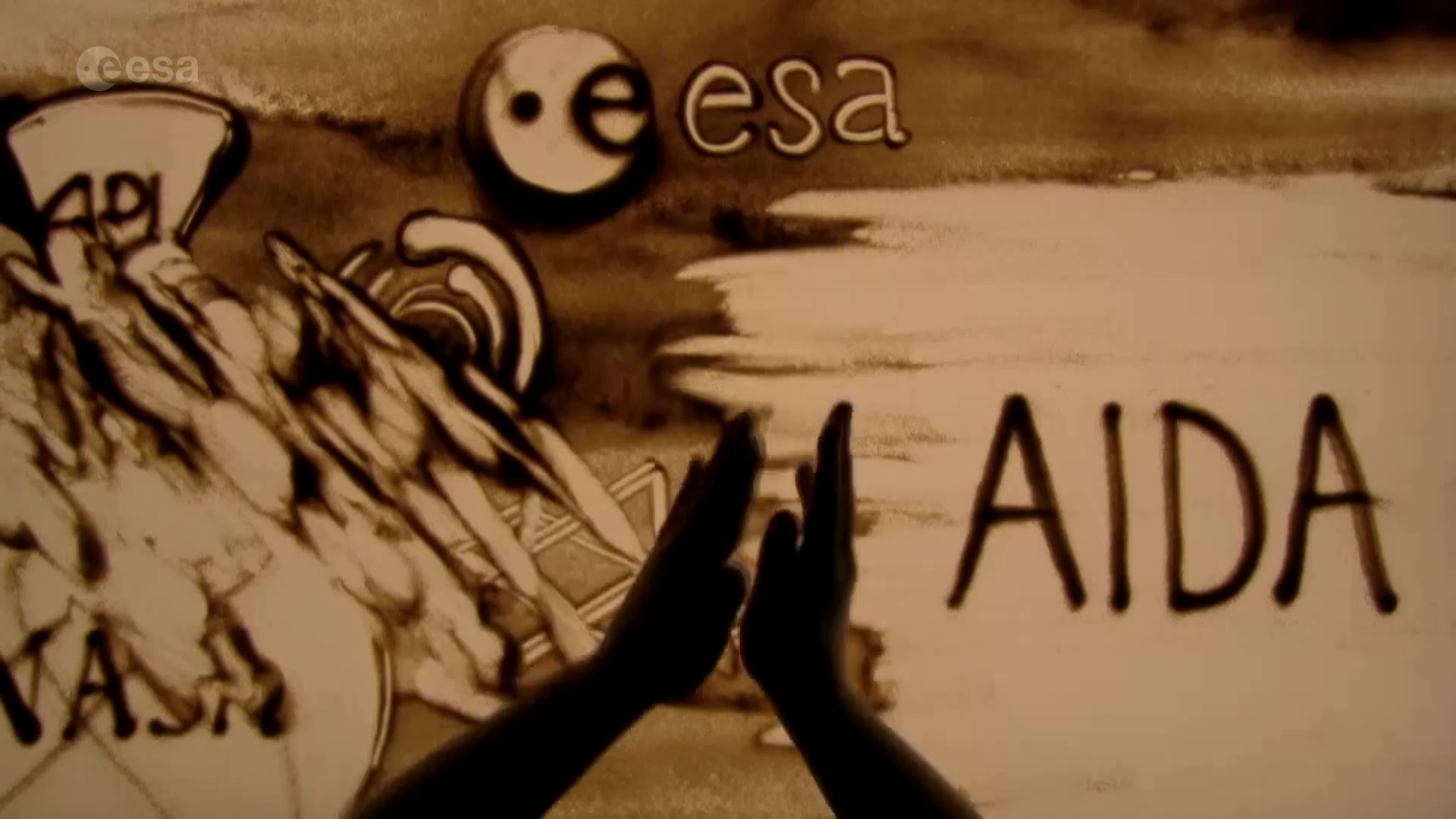The art of AIM
A unique depiction of the Asteroid Impact Mission (AIM), part of the international Asteroid Impact and Deflection Assesment (AIDA) mission, was shown at the AIM Science Meeting recently. The mission concept, as well as the reasons behind such a mission, were beautifully portrayed in sand art.
The goal of the meeting was to discuss the scientific and impact mitigation aspects of the mission, the mission and payload concepts, and to inform the relevant communities about the mission status. The discussion included talks on asteroid deflection techniques, in particular kinetic impacting, in view of the AIDA mission. Asteroid physics, in particular the formation and evolution of binary asteroids, as well as impact physics were also among the topics reviewed.
On the evening of 1st March, GMV invited all participants of the meeting to their premises in Tres Cantos for an event combining AIM and Rosetta. "If we wish to lead innovation and play a key role in the upcoming decades, in sectors like space exploration, then we need to dare to take on new technologies and applications," says Mariella Graziano from GMV, "and ROSETTA and AIM are perfect examples of looking ahead and anticipating the future."

So why organize a sand-art show? Graziano elaborates: "Sand art is like an exploration mission. You need to be there entirely, 100% concentrated in any single step you perform. A slight error can ruin your drawing just like a small unknown event can put a mission at risk."
Artist Didi Rodan, the performer of the evening, was able to fully capture the attention of the engineers: "When an audience is specialized and knows the topic in detail, the challenge is to surprise them by offering a different point of view. In the case of the AIDA mission I really felt the enjoyment and emotions of surprise with my audience."
But how to go about creating such a show? "The first phase is studying the subject and meeting the specialist. After that I make a detailed storyboard and start with music and rehearsals. The live show really is the cherry on the cake," explains Rodan. Graziano points out: "When people asked me afterwards whether there would be a video available to show their kids, I knew that we had succeeded in creating something for the future. When we show things to our children, the future is already there, the future are our children."
The AIM science meeting was hosted by the European Space Astronomy Centre (ESAC) in Villanueva de la Cañada near Madrid on 1-2 March 2016. AIM is a mission of opportunity currently in phase B1 being studied at ESA. The AIM mission is part of the AIDA mission, which is an international cooperation between ESA, NASA, JHU/APL, OCA and DLR.
GMV is playing an important part in AIM in terms of mission analysis, the guidance, navigation and control (GNC) subsystem, and close-proximity operations design, in one of the two industrial teams currently working on the AIM design. At the same time GMV’s Romanian subsidiary is developing a novel Hazard Avoidance and Fault Detection Isolation and Recovery (FDIR) function for the same mission. GMV is also leading one of the five concept studies for additional AIM science experiments with two CubeSats.





